
Journal of Grid Computing
Scope & Guideline
Fostering Excellence in Grid Computing Research
Introduction
Aims and Scopes
- Resource Management and Optimization:
Research in this area emphasizes techniques for efficient resource allocation, scheduling, and management in cloud and edge computing environments, often utilizing algorithms and heuristics to enhance system performance. - Distributed Computing Architectures:
The journal covers studies related to the design and implementation of distributed computing systems, including the integration of edge and fog computing with traditional cloud architectures to improve service delivery and operational efficiency. - Machine Learning and AI Applications:
There is a significant focus on the application of machine learning and artificial intelligence techniques to optimize computing processes, enhance predictive capabilities, and improve decision-making in resource management. - Security and Privacy in Cloud Computing:
Papers addressing security challenges in cloud and edge environments are prevalent, encompassing methods to safeguard data integrity, confidentiality, and availability through innovative frameworks and technologies. - Emerging Technologies Integration:
The journal explores the convergence of various emerging technologies such as IoT, blockchain, and 5G with cloud and edge computing, aiming to foster innovative solutions for smart city applications, healthcare, and industrial automation. - Sustainability and Energy Efficiency:
Research also emphasizes energy-efficient computing practices and sustainable resource management strategies to minimize environmental impact, particularly in data centers and large-scale distributed systems.
Trending and Emerging
- Federated Learning and Collaborative Computing:
Recent publications indicate a rising interest in federated learning, emphasizing collaborative approaches to resource management and machine learning that respect data privacy while enhancing model performance. - Edge Computing and IoT Integration:
The integration of edge computing with IoT is becoming increasingly prominent, focusing on optimizing data processing and resource allocation closer to data sources for improved efficiency and reduced latency. - Blockchain for Enhanced Security:
There is a growing trend towards employing blockchain technology to enhance security and trust in cloud and edge environments, particularly for applications in healthcare and supply chain management. - AI-Driven Optimization Techniques:
The application of artificial intelligence for optimization in scheduling, resource allocation, and performance prediction is gaining traction, reflecting a shift towards data-driven methodologies. - Energy-Efficient and Sustainable Computing:
Emerging themes in sustainability are evident, with a focus on energy-efficient computing practices and the development of green technologies to minimize the environmental impact of computing operations. - 5G and Network Optimization:
The exploration of 5G technologies and their implications for network optimization in cloud and edge computing environments is increasingly relevant, as researchers seek to leverage high-speed connectivity for improved service delivery.
Declining or Waning
- Traditional Grid Computing Models:
Research specifically dedicated to traditional grid computing models has seen a decrease, possibly due to the broader adoption of cloud and edge computing paradigms, which offer more flexible and scalable solutions. - Static Resource Allocation Techniques:
There is a waning interest in static resource allocation methods, as dynamic and adaptive approaches that leverage real-time data and machine learning gain traction for their superior performance in fluctuating workloads. - Single-Cloud Solutions:
Papers focusing solely on single-cloud solutions are less frequent, as the trend shifts towards multi-cloud and hybrid cloud environments that provide greater flexibility and redundancy. - Basic Scheduling Algorithms:
Research on basic scheduling algorithms without the integration of advanced techniques such as AI or machine learning is becoming less common, as the field moves towards more sophisticated and intelligent scheduling frameworks. - Generalized Security Protocols:
There is a noticeable decline in generic security frameworks, with more emphasis shifting towards specialized, context-aware security solutions that address the unique challenges presented by modern computing environments.
Similar Journals
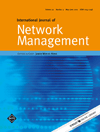
International Journal of Network Management
Advancing Knowledge in Network Management Excellence.The International Journal of Network Management, published by WILEY, has been an authoritative resource in the field of network management since its inception in 1991. With a strong academic reputation reflected in its 2023 category quartiles placing it in Q2 for both Computer Networks and Communications and Computer Science Applications, this journal is ranked within the top tiers of its categories, underscoring its pivotal role in disseminating high-quality research. The journal aims to provide insights into the latest advancements in network management strategies, technologies, and applications, catering to the needs of researchers, professionals, and students alike. By embracing rigorous peer-review processes and a commitment to publishing cutting-edge studies, it serves as a crucial platform for the exchange of knowledge and innovation within the network management community. Explore the wealth of resources and join the dialogue among a diverse audience striving to shape the future of computer networks and applications.
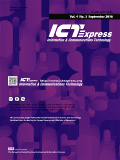
ICT Express
Shaping the Future of Computing and CommunicationICT Express is a leading open-access journal published by Elsevier that has established itself at the forefront of the fields of Artificial Intelligence, Computer Networks and Communications, Hardware and Architecture, Information Systems, and Software. Since its inception in 2015, this South Korea-based journal has provided a vital platform for disseminating innovative research and practical applications across these rapidly evolving domains. With an impressive impact factor and consistently high Scopus rankings—placing it in the top quartiles of its categories—it attracts contributions from both seasoned experts and emerging scholars. Current access options ensure that groundbreaking findings are readily available to a global audience, thus fostering collaboration and advancement in technology and computational sciences. As ICT continues to reshape various industries, the significance of research published in ICT Express is crucial for staying ahead in the digital landscape.

International Journal of Grid and Utility Computing
Empowering Research in Utility Computing ApplicationsInternational Journal of Grid and Utility Computing is a pioneering publication dedicated to advancing research in the domains of grid computing, utility computing, and their applications across various sectors. Initiated in 2005 and continuing through 2024, the journal is published by INDERSCIENCE ENTERPRISES LTD, a respected publisher known for its commitment to facilitating scholarly communication. With an ISSN of 1741-847X and an E-ISSN of 1741-8488, this journal, based in the United Kingdom, serves a global audience of researchers, professionals, and students. Although classified in the Q4 category across Applied Mathematics, Computer Science Applications, and Management Information Systems, the journal aims to bridge theoretical research with practical implementation, fostering interdisciplinary collaborations. Researchers looking for a platform to disseminate their work on grid technology and its utility in modern computing environments will find this journal an invaluable resource. The focus on innovative computing methodologies places it at the forefront of emerging trends and technology applications, despite the need for increased visibility in competitive metrics like Scopus rankings.

Cluster Computing-The Journal of Networks Software Tools and Applications
Connecting Ideas, Driving Applications in ComputingCluster Computing - The Journal of Networks Software Tools and Applications, published by Springer, is a premier academic journal catering to the vibrant fields of computer networks and software technologies. With an impressive impact factor and recognized as a Q1 journal in both Computer Networks and Communications and Software categories for 2023, it ranks within the top echelons of its field, boasting a Scopus rank of #50 out of 395 and #59 out of 407 respectively, highlighting its influence and reach. The journal, which has been in continuous publication since 2005, serves as a vital platform for groundbreaking research, offering insightful articles and tools that drive innovation in network computing. Researchers, professionals, and students are invited to contribute to and benefit from the dynamic discourse presented in this journal, which is pivotal for advancing knowledge and enhancing practical applications in a rapidly evolving technological landscape.
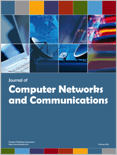
Journal of Computer Networks and Communications
Advancing the Frontiers of Networking KnowledgeThe Journal of Computer Networks and Communications is a premier open-access journal published by HINDAWI LTD, dedicated to advancing the field of computer networks and communications. With an ISSN of 2090-7141 and an E-ISSN of 2090-715X, this journal has been accessible to researchers since its inception in 2011, promoting widespread dissemination of knowledge in this rapidly evolving discipline. Based in Egypt, the journal's editorial standards are upheld through a rigorous peer-review process, contributing to its strong academic reputation. As of 2023, it holds a commendable Q2 ranking in Computer Networks and Communications and a Q3 ranking in Information Systems within its category quartiles. According to Scopus rankings, it occupies the 141st and 143rd positions in its respective fields, showcasing its relevance and influence in the academic community. The journal's mission is to publish high-quality research that addresses contemporary challenges in networking technologies and systems, making it an essential resource for researchers, professionals, and students seeking to innovate and excel in these fields.
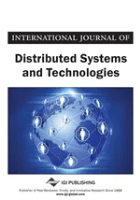
International Journal of Distributed Systems and Technologies
Pioneering Research in Computer Networks and Architecture.Welcome to the International Journal of Distributed Systems and Technologies, a prominent academic platform published by IGI Global dedicated to advancing the field of distributed systems and technologies. With an ISSN of 1947-3532 and an E-ISSN of 1947-3540, this journal, established in 2010 and continuing through 2024, offers a unique venue for researchers, professionals, and students to disseminate their findings in the realms of computer networks, communications, hardware, and architecture. Despite its current placement in the Q4 quartile for both computer networks and communications and hardware and architecture categories in 2023, the journal is committed to fostering innovative solutions and interdisciplinary collaboration that can drive future advancements. Although not open access, contributions to this journal not only receive rigorous peer review but also have the potential to significantly impact the community, underscored by a focus on applicable research that addresses the emerging challenges in technology. As part of a rich repository, the journal invites you to explore its latest issues and join in shaping the future of distributed systems.
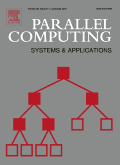
PARALLEL COMPUTING
Exploring the Depths of Multidisciplinary Computing.PARALLEL COMPUTING is a premier academic journal dedicated to advancing research in the dynamic and rapidly evolving field of parallel and distributed computing. Published by Elsevier, this journal has been at the forefront of technological advancements since its inception in 1984, engaging a global audience and fostering a rich dialogue among researchers and practitioners alike. With an impressive impact factor that reflects its relevance in the academic community, PARALLEL COMPUTING is currently categorized in multiple fields, including Artificial Intelligence (Q3), Computer Graphics and Computer-Aided Design (Q2), and others, highlighting its multidisciplinary scope. As a vital resource, the journal features cutting-edge research articles, reviews, and methodologies that drive innovation across various domains such as hardware architecture, software engineering, and theoretical computer science. Although it does not offer open access, the journal's traditional publication model ensures rigorous peer review and high scholarly standards. Researchers, professionals, and students are encouraged to engage with the latest findings and contribute to the journal's commitment to excellence in parallel computing.
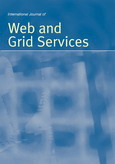
International Journal of Web and Grid Services
Driving excellence in web and grid services scholarship.International Journal of Web and Grid Services, published by INDERSCIENCE ENTERPRISES LTD, is a distinguished platform for innovative research in the realms of Web Services, Grid Computing, and Distributed Systems. Established in 2005, the journal has consistently provided a forum for groundbreaking studies, catering to the evolving needs of academia and industry professionals alike. As of 2023, it is positioned in the Q3 quartile in both Computer Networks and Communications and Software, showcasing a notable impact within the field. Researchers will find this journal instrumental in disseminating knowledge, driving advancements, and fostering collaboration in the rapidly changing technological landscape. Although it currently does not offer open access options, its commitment to high-quality peer-reviewed content ensures that it remains a vital resource for those seeking to stay at the forefront of web and grid services research. With an audience comprising both seasoned scholars and emerging professionals, the International Journal of Web and Grid Services continues to be pivotal in shaping ongoing discourse and innovation.
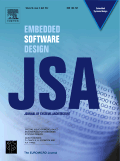
JOURNAL OF SYSTEMS ARCHITECTURE
Connecting Theory and Practice in Systems ArchitectureJOURNAL OF SYSTEMS ARCHITECTURE is a prestigious academic journal published by ELSEVIER, based in the Netherlands, that has established itself as a leading platform for research in the fields of Hardware and Architecture and Software. With an impressive impact factor and ranked in the Q1 category for both computer science sectors, this journal is recognized for its high-quality contributions, evidenced by its Scopus ranking of #32 in Hardware and Architecture and #74 in Software, placing it in the top percentiles of its field. The journal spans a wide range of topics central to systems architecture, focusing on innovative research that advances the understanding of computer systems and promotes future developments. Researchers, professionals, and students alike will find invaluable insights and emerging trends that address the challenges and opportunities within the rapidly evolving field of systems design and architecture. Spanning from 1996 to 2024, the JOURNAL OF SYSTEMS ARCHITECTURE continues to be a vital resource for those seeking to stay at the forefront of technology and research.
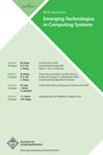
ACM Journal on Emerging Technologies in Computing Systems
Fostering Insights into Next-Gen Computing SystemsACM Journal on Emerging Technologies in Computing Systems, published by the Association for Computing Machinery, stands as a premier platform dedicated to the exploration and discussion of avant-garde advancements in computing systems. With an ISSN of 1550-4832 and an E-ISSN of 1550-4840, this journal has achieved notable recognition, holding a 2023 Q2 ranking in key fields such as Electrical and Electronic Engineering, Hardware and Architecture, Nanoscience and Nanotechnology, and Software. Spanning from 2005 to 2024, it provides a critical forum for researchers, professionals, and students alike to disseminate innovative research and applications that shape the future of technology. Although currently not open access, the journal's commitment to high-quality, peer-reviewed content ensures its relevance and impact, as reflected in its competitive Scopus ranks across various disciplines. Engage with groundbreaking research that propels the frontiers of computational systems in this dynamic academic journal.